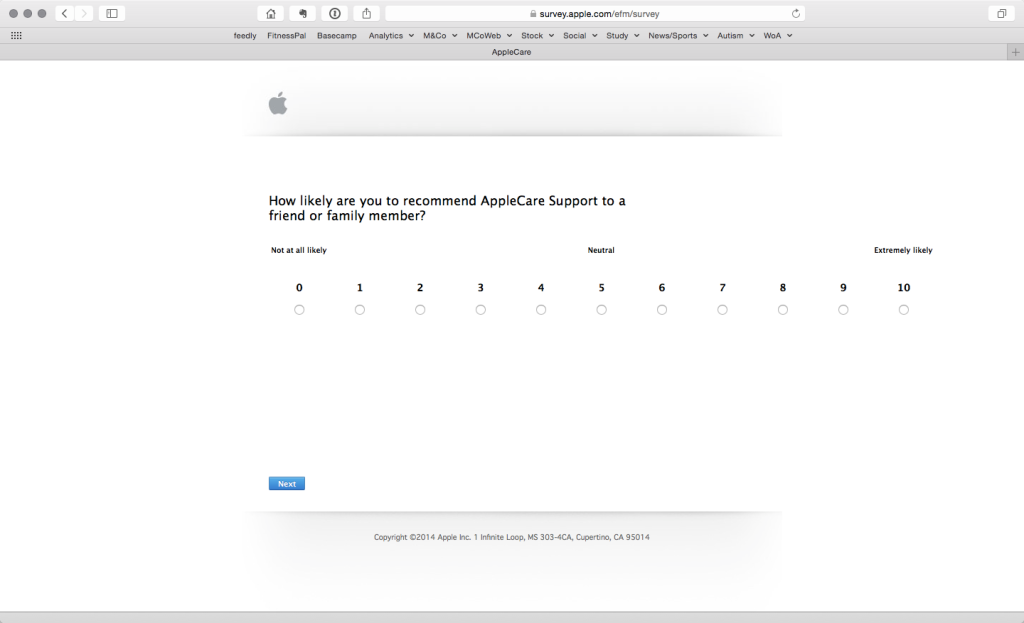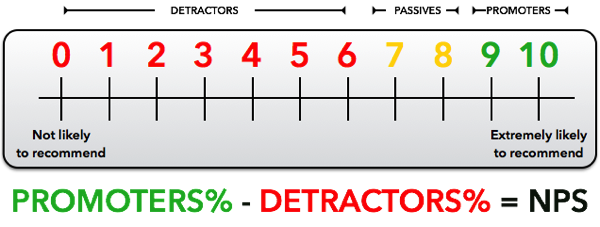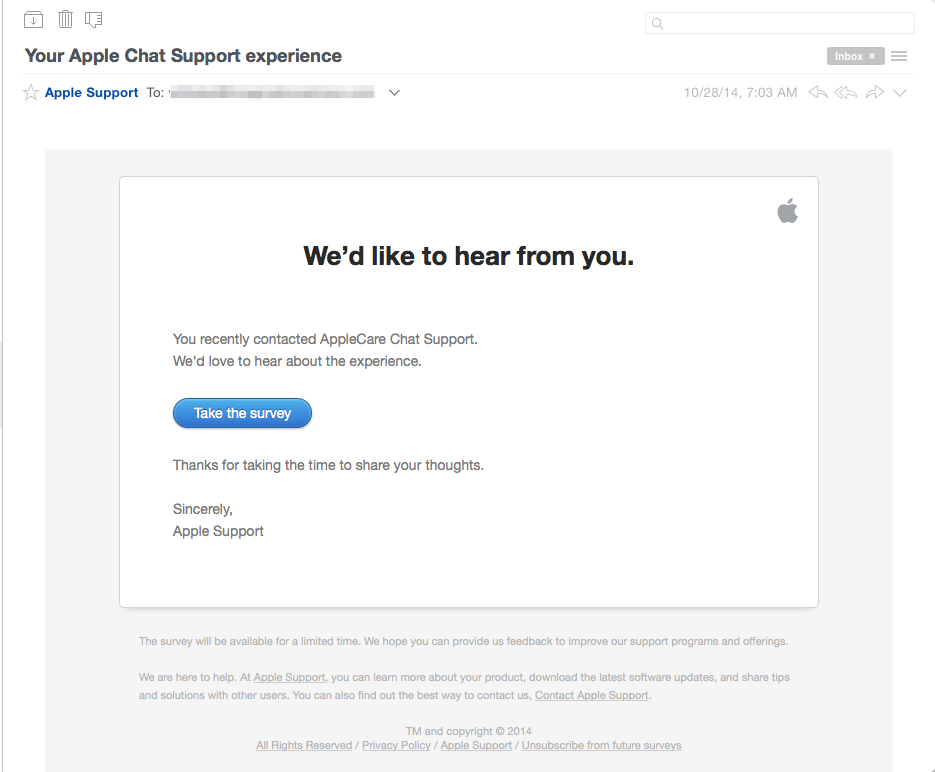How likely is it your customers would recommend buying from you?
How likely is it your employees would recommend working for you?
Ask them using the world’s shortest, bestest, awesomest survey.
What Is NPS?
The open-source Net Promoter Score was invented by Fred Reichheld to measure loyalty, and it’s now used by pretty much every company you think of when you think of boss customer service: Apple, Southwest Airlines, Trader Joe’s, Zappos, Amazon, and the list goes on and on.
While these companies pay a great deal of money to have their Net Promoter Scores independently surveyed, analyzed, and verified, you can use it yourself for nothing.
It works with customers, employees, donors, volunteers – any group with which you’d like to build loyalty.
Asked by phone, mail, email, or using online software, it’s three simple questions:
1. On a scale of 0 (not likely to recommend) to 10 (extremely likely to recommend), how likely is it you’d recommend (our company) to a friend or colleague?
2. What’s the biggest reason for your answer to question one?
The third question is conditional, and you can set up an online survey as such.
3. If your answer to question one was not a 10, what do we have to do next time to earn a 10?
That’s it! Easy peasy, George and Weezie.
How Is NPS Calculated?
To calculate your NPS score, you use only the answers to question one. Depending on their answer to that question, each respondent falls into one of three categories:
- DETRACTORS gave you a score between 0 and 6.
- PASSIVES gave you a score of 7 or 8.
- PROMOTERS gave you a score of 9 or 10.
Your score will be a hard number (as opposed to a percentage) between zero and one hundred.
An Example Of Net Promoter Score (NPS)
Let’s say you surveyed 100 customers this week:
- 61 gave you a 9 or 10.
- 30 gave you a 7 or 8.
- 9 gave you somewhere between 0 and 6.
First, calculate your promoter percentage: 61/100 or 61%.
Then, calculate your detractor percentage: 9/100 or 9%.
Subtract your detractor percentage from the promoter percentage (61 – 9) to arrive at your Net Promoter Score of 52.
Is 52 any good?
Sure! Remember, this isn’t an elementary school grading scale. You didn’t fail. You’d lead some industries with a score of 52. Here’s a list of 2014 NPS industry benchmarks.
But! It’s also a big opportunity to examine your strategic plan for customer delight. Your score isn’t the end. It’s only the beginning.
Why Is NPS The BestBestBest?
It’s easy to take. Recently, I had United Airlines ask me to take a non-NPS customer survey. They told me it would take approximately 25-35 minutes. Who has time for that? By contrast, NPS can be completed in as few as two seconds. Even if someone fills out all three answers, it shouldn’t take her more than five minutes.
It’s easy to understand. In addition to brevity, NPS wins with clarity. We’ve used zero to ten scales forever. We understand them. We also know what it means to recommend someone to a friend.
It’s easy for a business to follow-through. Questions two and three provide immediate, direct feedback to a business from their customers. You can not only see patterns emerge, but you can reach out to customers directly to address problems and close feedback loops. In the example above, you could reach out directly to the nine detractors to solve their issues. Then, you could start to work on the thirty passives.
Take Action!
Are you ready to begin using NPS yourself? Continuing this week’s theme of employee awesomeness, why not start by doing an eNPS (employee NPS) survey?
You can use question one from above or ask it differently, saying:
On a scale of 0 (not likely to recommend) to 10 (extremely likely to recommend), how likely is it you’d recommend working for (our company) to a friend or colleague?
Deidre and I did this last week. We got our feedback, and we’re getting ready to schedule meetings with every member of our team to address their suggestions for improvement.
Yesterday, we sent the survey to our clients. We’re collecting results now.
Are you ready to do the same?
(The answer to that question is “yes.”)




Leave a Reply